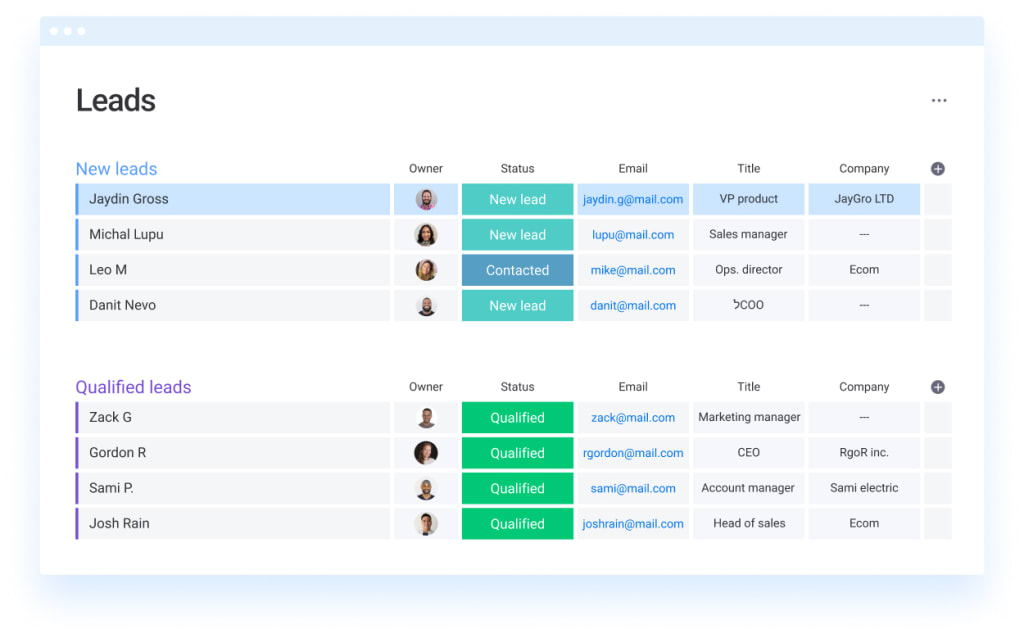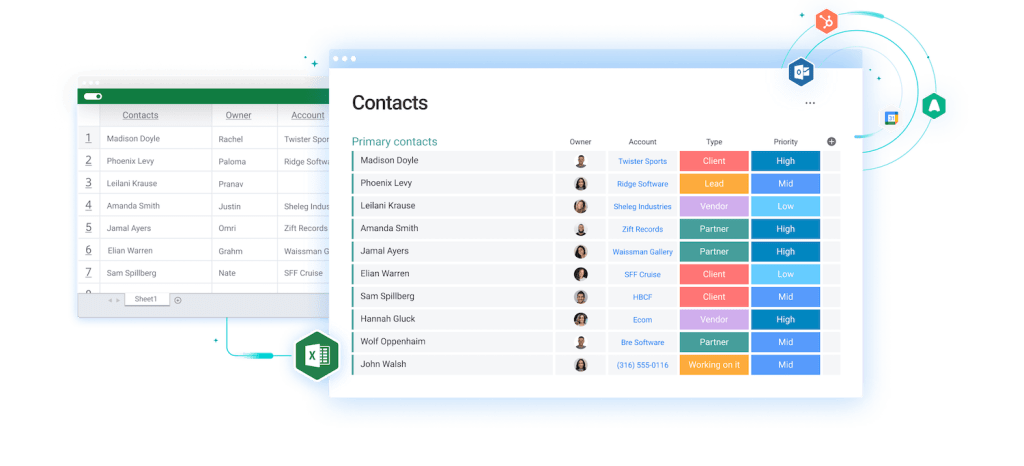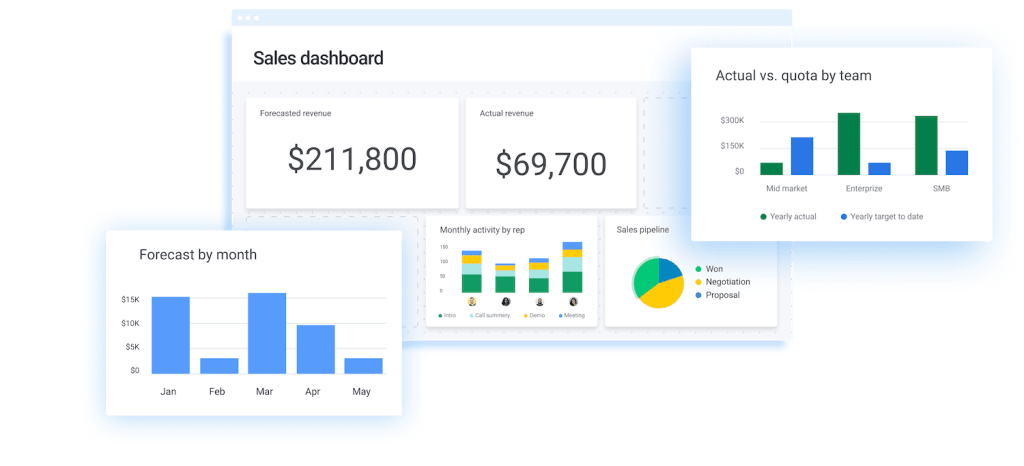Customer data analysis helps you understand precisely how your customers interact with your website, brand, and product. You can use these key insights to drive more sales, boost customer satisfaction, and improve the overall customer experience.
In this guide, we’ll define what customer data analysis is and why it matters. Then we’ll explore how customer analytics works and highlight some best practices and tools for you to unlock more customer insights.
What is customer data analysis?
Customer data analysis, also called customer analytics, is the process of collecting, organizing, and analyzing customer data to unlock insights into customer behavior.
It requires various tools for gathering and managing data and a methodological framework to examine and interpret the data.
Companies then use the data to make decisions about their:
- Marketing,
- Product development,
- Sales,
- and other aspects of their business.
For instance, analyzing customer data could highlight your best marketing platform or help you map your ideal customer journey.
Why and how do companies use customer analytics?
Here’s why companies use customer analytics:
- To understand customer behavior in terms of how customers interact with their products and services, what factors influence purchasing behavior, and what drives their decisions.
- To improve customer experience by identifying what needs improvement, such as product features, customer support, or marketing messages.
- To increase customer loyalty: Customer analytics can help companies identify their most valuable customers and create targeted retention strategies to keep them engaged.
Which teams use customer analytics?
- Marketing teams can create targeted campaigns through customer profiling, optimize their messaging, and measure success.
- Product development teams can identify customer needs and preferences, improve product features, and work on new product ideas that meet customer demand.
- Customer service teams can identify common customer issues, improve response times, and optimize support channels to improve the overall customer experience.
- Sales teams can identify opportunities for upselling or cross-selling and create sales strategies through customer segmentation.
What are the customer analytics focus areas?
Customer analytics has three critical categories — customer journey, cohort analysis, and customer lifetime value.
Customer journey
Customer journey maps focus on understanding the customer’s interactions with your brand — from the initial research phase to the point of purchase. That’s why they may involve a mix of data points from several different exchanges.
The right analytics tool can compress these data points into usable insights such as how likely a deal is to close or what the total deal value is.
Here’s a glimpse of how monday sales CRM helps you manage that:
Your dashboard has details about where in their journey each customer is, along with their likelihood of closing.
Try monday sales CRMCohort analysis
Cohort analysis segments customers based on attributes and monitors their performance over time. Attributes can range from the date they signed up to their geographic location. Each of these groups is called a cohort and is plotted on a chart. An example cohort could be
On the cohort analysis graph, the y-axis represents the group of customers and the x-axis represents the observation time.
Cohort analysis allows businesses to:
- Identify customer trends over time
- Compare customer behavior across different cohorts
- Evaluate customer lifetime value
Customer Lifetime Value
Customer lifetime value (CLV) is a metric used in customer analysis that represents the total amount of money a customer is expected to spend on a business’s products or services over the course of their relationship with the business.
CLV is a useful metric because it helps businesses understand the long-term value of their customers and can be used to inform marketing, customer acquisition, and retention strategies.
Why is customer data analysis important?
Customer analytics are just as important as financial reports when gauging your business’ health. Analyzing your customer data helps you understand who your customers are, what they want, how they behave, and how satisfied they are with your company or a specific product.
By creating a 360 degree view of your customer base, you can identify high-value customers and understand how best to engage them.
Take UK-based grocery store Tesco, for example. Even before online shopping existed, it launched its Tesco Clubcard reward scheme to track customer purchase history and offer appropriate incentives. After analyzing the data, Tesco discovered that a few loyal customers accounted for most of its sales. So it created tailored coupons and offers to entice casual shoppers to the stores and encourage returning customers to spend more.
Within months of launching, Clubcard customers were spending 4% more than non-Clubcard customers.
Using customer data analysis helped Tesco beat its competitors to become the number one grocery store.
What is the process in customer data analysis?
Organizations that genuinely understand their customers’ buying habits and lifestyle preferences can also predict their behavior. For example, Netflix uses predictive analytics to recommend what viewers might like to watch next based on their previous choices.
But before customer data analysis can inform business decisions, it must first be collected, organized, and analyzed.
Collection
First, you need to gather raw customer data from various sources, such as CRM software, marketing tools, and third-party sources. This data includes:
- Demographics
- Purchase history
- Web browsing
- Social media activity
- Contact center interactions
- Advertisement engagements
- Survey responses
In a Databox survey, half of the respondents said they use a CRM tool to gather customer data, 10% use a Customer Data Platform (CDP), and 40% use both a CRM and CDP.

Organization
After you’ve collected the data, you need to organize and store it in one centralized location, such as a customer data platform (CDP). A CDP connects to your CRM and other tools in your martech stack and helps you combine and sort the different types of data in a meaningful way.
Analysis
Finally, you can use a customer analytics tool to interpret the data and display results in charts, graphs, and dashboards. For example, by analyzing demographics, purchase history, and social media activity, you might discover your most valuable customers are middle-income women from California who engage with your brand on Instagram.
Customer data analysis best practices
With those three stages in mind, here are the best customer data analysis practices to inform your business decision-making.
- Evaluate analytics from the perspective of individuals and not just groups: Analyzing data from an individual perspective can help businesses identify specific pain points that may be missed when analyzing data from a group perspective.
- Decide what outcomes you want. Focus your time and energy on the business insights you want to use.
- Identify what’s important. Determine the most important data inputs for your brand, e.g. social media activity or call center interactions.
- Clean and consolidate data. This is where you need to unify data from different systems into one centralized location.
- Analyze the data. Slice and dice the data to unearth your findings. Don’t force the results. Accept the conclusions.
- Continually optimize previous decisions. It’s imperative to keep analyzing your data to refine your decisions accordingly.
- Use AI to revise and optimize data in real time. Incorporate AI and machine learning to optimize your individual customer relationships further.
- Automate data collection and extraction to focus on core competencies: By using tools such as data analytics software and automated data extraction processes, you can streamline customer analytics efforts and save time for more critical business operations.
Common customer data analysis metrics
Here are some standard customer data analysis metrics you may consider using in your business.
Customer Lifetime Value (CLV)
Customer lifetime value (CLV) measures the total revenue a company can expect to earn over the lifetime of a given customer relationship. It’s one of the best ways to link customer success efforts and revenue.
Read more: How to calculate customer lifetime value.
Customer Retention Rate (CRR) & Cost (CRC)
Customer retention rate (CRR) measures the percentage of existing customers your business retained over a given period, e.g. from one month, quarter, or year to the next.
Read more: How to calculate customer retention rate.
Customer retention cost (CRC) measures the amount of money your business spends on retaining customers. It tells you whether your customer success efforts are effective.
Customer Churn Rate (CCR)
Customer churn, also known as customer attrition, defection, or turnover, is the opposite of customer retention and measures how many customers you lose over a given period (usually a month).
Read more: How to calculate customer attrition.
Customer Satisfaction Score (CSAT)
Customer satisfaction score (CSAT) measures how customers rate their experience with your company based on your choice of questions and rating scale.
Net Promoter Score (NPS)
Net Promoter Score (NPS) measures customer responses on a 10-point scale to a one-question survey: “How likely are you to recommend (business or product) to a friend?” Responses are classed as follows:
- Detractors = 0 to 6
- Passives = 7 or 8
- Promoters = 9 or 10
Learn more about customer feedback analysis here.
Best tools for customer data analysis
Customer data analysis tools help you understand customer behavior and improve the customer experience. They can be part of a CRM or a standalone platform that collects customer data from different sources for storage and analysis. Furthermore, these tools connect to popular sales and marketing applications, web content management systems, email marketing tools, social media platforms, and customer loyalty programs.
Read more: How to analyze customer behavior.
Here are 5 customer data analysis tools:
1. Google Analytics: a web analytics platform that provides key statistics about how many users visit your website, how they got there, and who they are.
2. Adobe Analytics: an enterprise analytics platform that provides real-time insights to build unique customer profiles for personalized marketing campaigns.
3. Mixpanel: a behavior analytics platform that lets you understand how your customers interact with your website and which product features they use most.
4. Hotjar: a customer analytics and conversion rate optimization tool that lets you see how customers interact with your website via heatmaps and screen recordings.
5. Kissmetrics: a customer behavior analytics tool that analyzes the customer journey by tying data to real people.
When surveyed, most respondents said CRM platforms and Google Analytics were irreplaceable customer data analysis tools.
How to conduct practical customer data analysis with monday sales CRM
With monday sales CRM, you can get closer to your customers, automate repetitive work, and organize your data in one place.
- Collection. Capture leads by integrating with your existing tools, adding a form to your website, or adding them manually. Import your current information and contacts from Excel or through an API.

- Organization. Receive alerts when you enter a duplicate lead or contact, and eliminate overlaps by identifying and merging duplicate leads and contacts.

- Analysis. Keep track of your customer data through visually intuitive dashboards to instantly report on sales figures and highlight customer insights. Enhance your dashboard with metrics, reports, and more powerful data insights directly from Google Data Studio.

Frequently asked questions
Here are three frequently asked questions about customer data analysis:
What are the different types of customer data?
There are 4 types of customer data:
- Basic data: demographic information, like a customer’s name, gender, location, and contact details.
- Interaction data: how customers use your products, like usage, purchasing habits, and popularity.
- Behavioral data: how customers use your services, such as sign-ups, account logins, and account deactivations.
- Attitudinal data: what customers think of your company, product, or service.
What can you do with customer data?
Here are 7 ways experts use customer data to grow their business:
- Optimize your product for users
- Improve customer experience
- Make personalized offers
- Run customized marketing campaigns
- Fine-tune your loyalty program to increase sales
- Improve your content marketing
- Use it to predict the future
What are the benefits of analyzing customer data?
The benefits of analyzing customer data include the following:
- Increased efficiency
- Reduced customer churn
- Lower customer acquisition costs
- Higher sales
- Validated product updates/features with customer-centric insights
- More personalized customer experiences
- Better customer service
Master your customer data analysis
Mastering your customer data analysis will help you understand who your customers are, what they want, how they behave, and how satisfied they are with your products or services. The most popular tools for gathering, organizing, and analyzing customer data are a CRM, a CDP, and Google Analytics.
Try monday sales CRM to see how easy it is to organize and analyze your customer data in one place.

